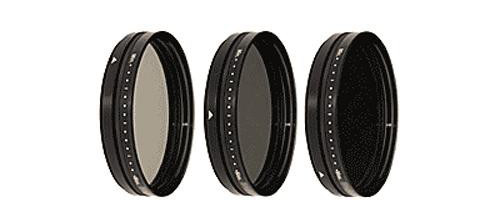Photography filters are accessories that attach to the front of a camera lens to alter the way the camera sees the scene. They can enhance the colors, adjust exposure, reduce glare, and bring out the details in a picture. There are several types of filters available, and each one serves a unique purpose. In this article, we’ll explore some of the most common photography filters and how they work.
Photography Filters Infographic
This handy infographic, The Photography Filters Cheat Sheet, can help. Created by The Studio at zippi.uk.co, who brought us other handy infographics such as this one for manual photography, the infographic shows us what each filter does and how it affects your photo. This is definitely one to bookmark the next time you’re shopping for a filter (or buying a lens and looking for more than just protection!)

UV Filters
UV filters are clear filters that block ultraviolet light from entering the camera lens. They are often used to protect the lens from scratches, dust, and fingerprints. Although UV light doesn’t affect the color or sharpness of the image, it can cause a bluish cast in certain conditions. UV filters help reduce this cast and produce clearer images.
Polarizing Filters
Polarizing filters are used to reduce glare and reflections from shiny surfaces like water, glass, and metal. They work by selectively blocking light waves that are vibrating in a particular direction. When rotated to the correct angle, they can also enhance the color saturation and contrast in the scene. Polarizing filters are commonly used in landscape and outdoor photography.
ND Filters
ND filters, or neutral density filters, reduce the amount of light entering the camera lens without altering the color balance. They come in different densities, or levels of light reduction, and are used to create longer exposures, wider apertures, or slower shutter speeds. This is particularly useful when shooting in bright sunlight or when trying to create motion blur effects.
Graduated ND Filters
Graduated ND filters are similar to ND filters, but they have a gradient pattern that gradually transitions from dark to clear. They are commonly used in landscape photography to balance the exposure between the bright sky and the dark foreground. By placing the dark portion of the filter over the sky, photographers can reduce overexposure and capture more detail in the scene.
Color Filters
Color filters are used to add or subtract colors from the image. They come in a variety of colors, including red, blue, yellow, green, and orange. Color filters can be used to enhance or correct the colors in the scene, create mood, or add artistic effects. For example, a red filter can make a blue sky look more dramatic, while a green filter can make foliage look greener.
Other Filters
There are several other types of photography filters available, including infrared filters, fisheye filters, soft-focus filters, and close-up filters. Infrared filters block visible light and allow only infrared light to enter the camera lens. Fisheye filters create a wide-angle effect that distorts the image into a circular or curved shape. Soft-focus filters blur the edges of the image to create a dreamy or romantic effect. Close-up filters, also known as macro filters, allow you to take close-up photos of small objects by reducing the minimum focus distance of the lens.
Conclusion
Photography filters are essential tools for any photographer looking to enhance their images and create unique effects. Each type of filter serves a specific purpose and can be used in different situations. Choosing the right filter for the job requires some experimentation and practice, but the results can be truly breathtaking. Whether you’re a beginner or an experienced photographer, adding a few filters to your camera bag can open up a whole new world of creative possibilities.













